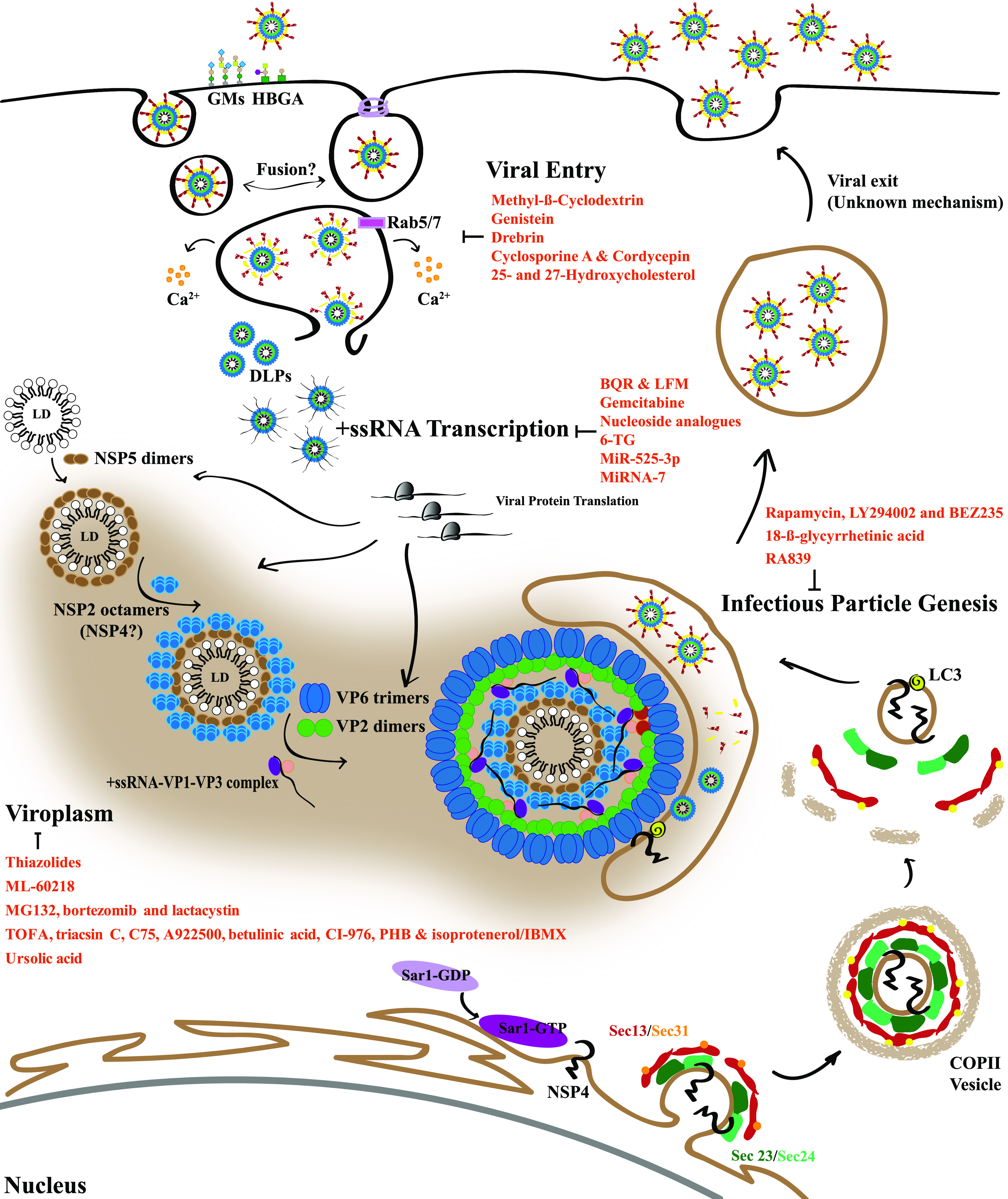FIG 1.

RV life cycle. The first step of the replication cycle consists of the interaction of the infectious particle with glycan attachment molecules. Then, the two models for RV entry are depicted. (Left) Engulfment of the virus in a tight-fitting membrane directed by viral components (38). (Right) Clathrin-dependent (or clathrin-independent) endocytosis, depending on strain. Once in the cytosol, homotypic fusion may occur for RV to finally reach a compartment where calcium ions are extruded from the vesicle to the cytoplasm, producing a progressive decrease of the calcium concentration and leading to the disassembly of the VP7/VP4 layer. Once devoid of the VP7 layer, the VP4 spike is able to perform the fold-back transition, leading to the vesicle bilayer burst and the DLP release into the cytoplasm to initiate viral +ssRNA transcription. After the translation of viral proteins, NSP5 and NSP2 form viroplasms (VPs), where morphogenesis occurs. VPs are large, membrane-less, electron-dense cytoplasmic structures. NSP2, in turn, associates with precore complexes (consisting of VP1, VP3, and segmental +ssRNA), VP2, and VP6 to give rise to immature DLP particles, which interact with NSP4 inserted into the ER. NSP4 is synthesized as an ER transmembrane protein and interacts with Sec24 to be incorporated into COPII vesicles that are released into the cytoplasm. GDP/GTP exchange on Sar1 induces the insertion of Sar1 into the ER and the subsequent recruitment of Sec23/Sec24. Sar1 interacts with Sec23, which allows Sec24 to bind the cargo protein, NSP4, and concentrates these proteins into the nascent COPII vesicle. LC3 interacts with NSP4 and inserts into the NSP4-containing, COPII-derived membranes. The LC3/NSP4-containing membranes traffic to VPs. DLPs produced in the VP interact with NSP4, which triggers particle budding through the LC3/NSP4-containing membranes and infectious particle assembly. The exit of TLPs is by cell lysis or budding (polarized cells).
